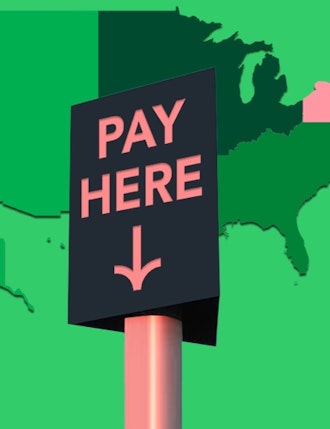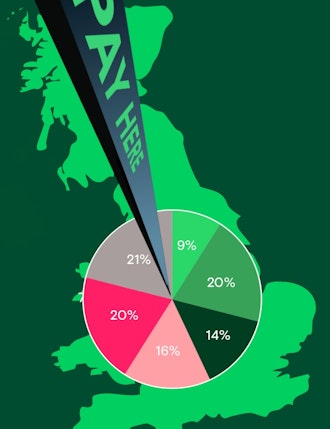Remember a time when buying something was as simple as popping to your local corner shop and handing over hard cash? There are still many of us who do, but it’s very clear that this is no longer the norm. The landscape around the buying and selling of goods is changing faster than it ever has, taking different direction and speed in different countries, and influenced by generations and culture.
The acquirers that recognise and respond to the changing needs of merchants and their customers against this backdrop, will be the ones that continue to thrive through the next decade and beyond. Using snippets of our latest research we look here into some of the factors for the rapid changes and payments trends in Europe, with a special focus on Italy, Spain and France.
Generations driving payments trends
As generations Y and Z find their financial feet and become significant consumers of goods, they forcing a seismic shift in how future payments are done. Practically born with smartphones in their hands, they are used to speed, convenience and choice, and are starting to apply these expectations to how they purchase commodities and services.
Not only that, but they are savvy, too. And brand-oriented. They know how to shop around for the best deal on day-to-day needs, but, just as they proudly sport their Nike and Adidas, have a propensity to form strong affinities with merchants that reflect their core values – and, importantly, those that offer the very best experiences. This means those sellers are under increasing pressure to offer a ‘shopping experience’. To keep up with this, retailers look at smart way to add value to their customer experience such as loyalty rewards, super-convenient delivery options, and the ability to do everything from reaching out through a new eCommerce channel, to managing their business back office.
Technology driving payments trends
A perfect storm of developments are converging to make this one of the most exciting – and challenging – times ever for commerce and payments. So, what are they?
Well, the Smartphones with which our Millennials have grown up – with their almost limitless capabilities – are arguably the single biggest factor, as they significantly raise such consumers’ expectations, in terms of what’s possible in every area of their lives and daily needs, including sourcing and paying for goods and services.
Our report looks at the extraordinary growth of smartphone adoption, worldwide, where GSMA Intelligence predicts that the number of people connected to such devices, today, is around 5 billion. This number is forecast to rise to a phenomenal 5.9 billion by 2025, 71 per cent of the worldwide population. In Europe, by end of 2020, GSMA’s Mobile Economy 2018 report predicts that mobile technologies and services will generate 4.1 per cent of the region’s gross domestic product, or 720 billion euros. It’s clear that payment technologies will need to keep pace with this fast-advancing connectivity. Not surprisingly, eCommerce is soaring as smartphones and other related technologies including tablets, cloud-services and social media, facilitate innovation and change.
And all of this is about to be accelerated to warp speed by the global move to 5G technology, promising even faster access to services and real-time data.
Yes, Payments, but not as we know it
Major, disruptive brands like Amazon Go and Uber are also fuelling the change in consumer expectations. They are seizing the day amidst these fast-emerging new capabilities, raising consumer expectations of immediate, one click – or even intervention-free – shopping and checkout experiences by offering automatic payment services.
Meanwhile other innovators have spotted the opportunity to blend the digital with the physical for ultimate consumer choice, like forward-thinking Spanish retailer El Corte Inglés. In 2018, it joined forces with Chinese online payments giant Alibaba to offer ‘phygital’ commerce. Their groundbreaking partnership covers eCommerce, physical retail, cloud services and payment systems, and sees El Corte Inglés opening digital stores using Alibaba platforms like Tmall Global and AliExpress to reach a worldwide audience with its Spanish products. At the same time, AliExpress has access to physical spaces in the Spanish retailer’s stores.
Offline merchants are under increasing pressure in a market where eCommerce is booming and competing for revenue in an online space. While many were already starting to realize the potential of being more digital and better-connected, the current coronavirus pandemic has added to the sense of urgency around such change by increasing people’s reluctance to use hard cash and propensity towards digital payments. We have already seen small retailers starting to change their business models as a consequence, with more leaning towards unattended payment solutions. It is more important than ever to have a payments platform that supports these changes.
Conclusion
There is no doubt we are looking out on the dawn of a new world order, filled with untold opportunities. To grasp this, acquirers need to embrace this change, make themselves expert in all the advancements coming on stream, and combine this with their unrivalled knowledge of merchants’ needs to help them evolve to meet what is emerging.
Those who grasp this baton and run with it will be the ones best positioned to succeed.
Interested in reading more around this subject? Here are some useful articles…













